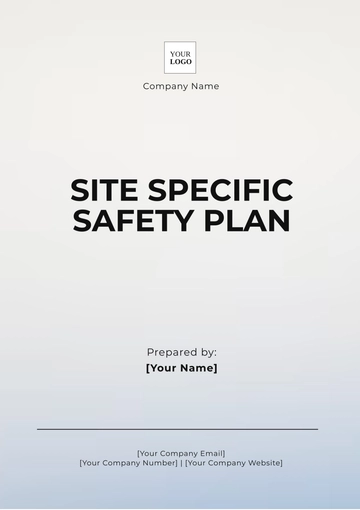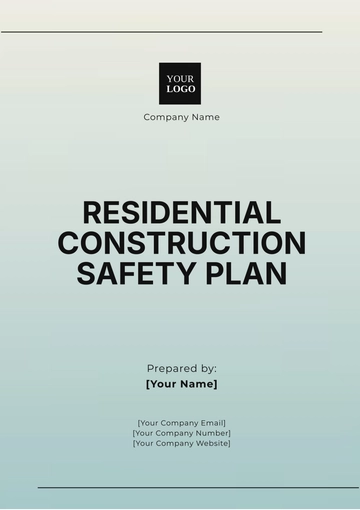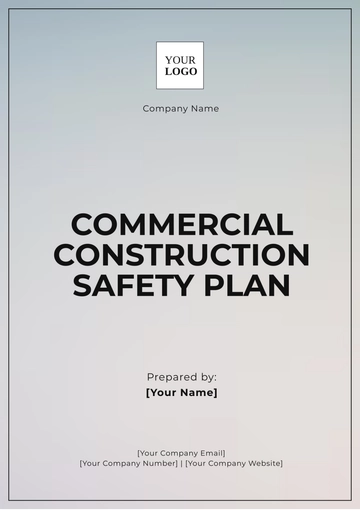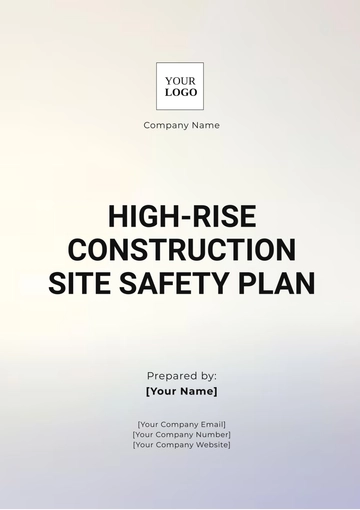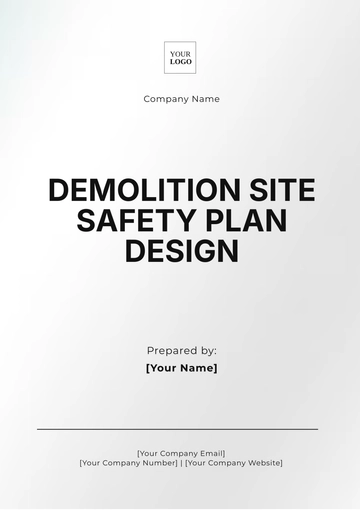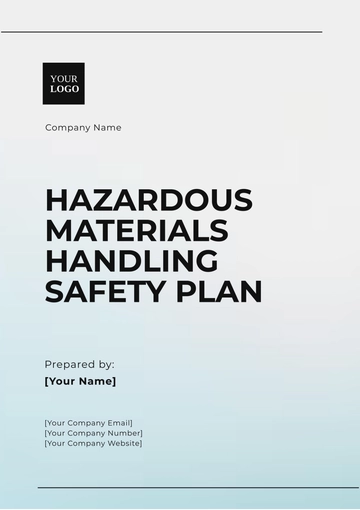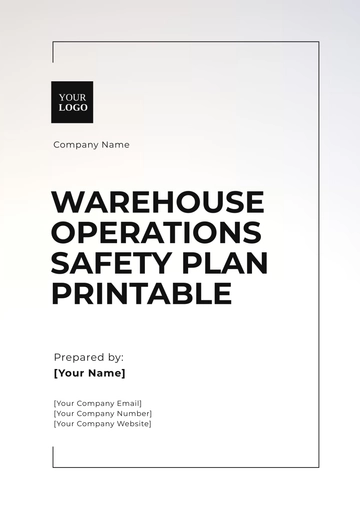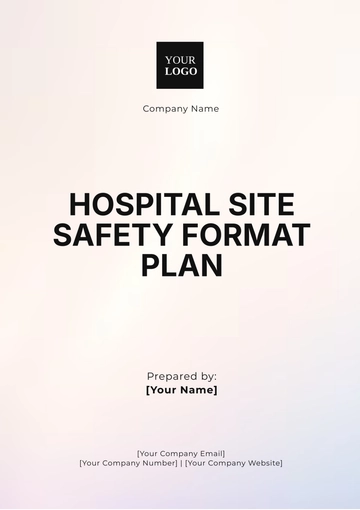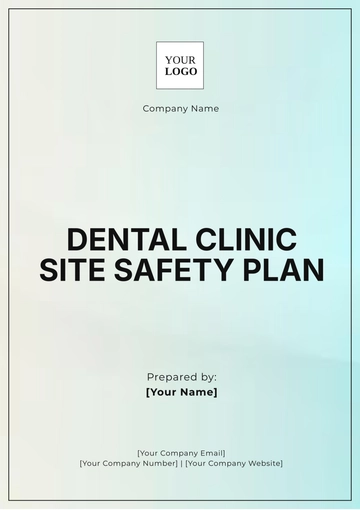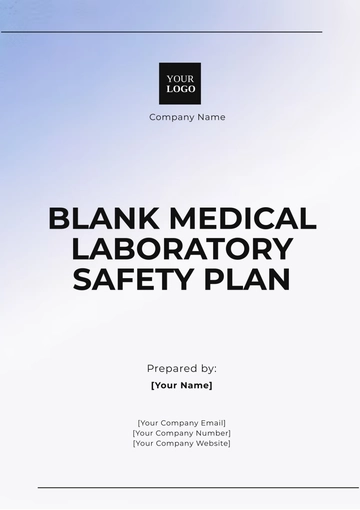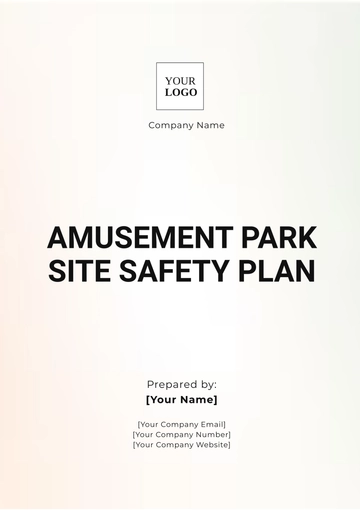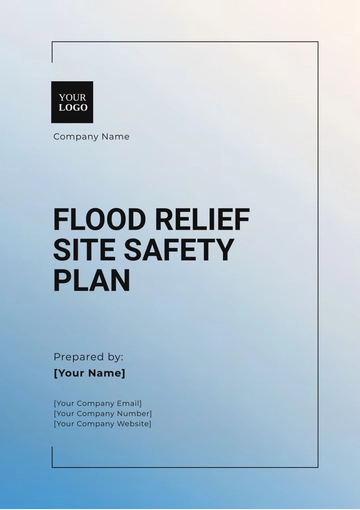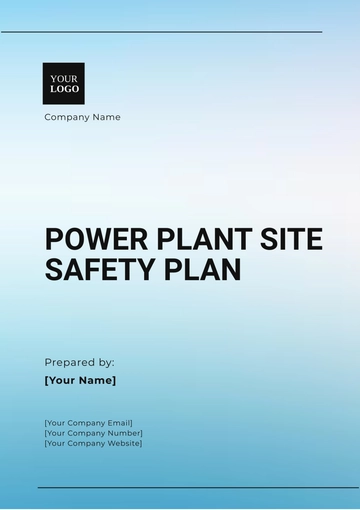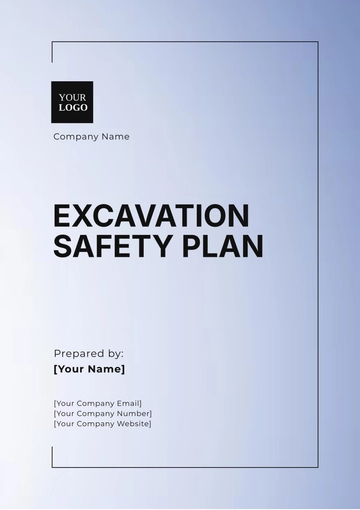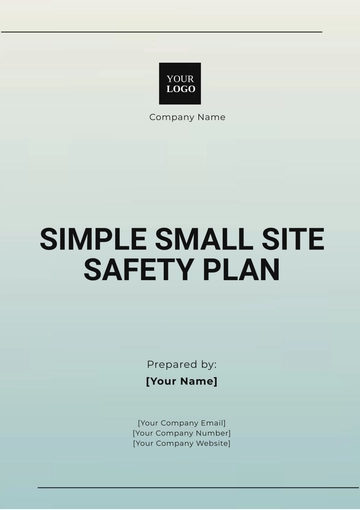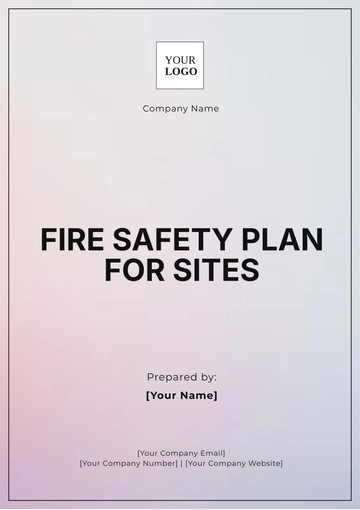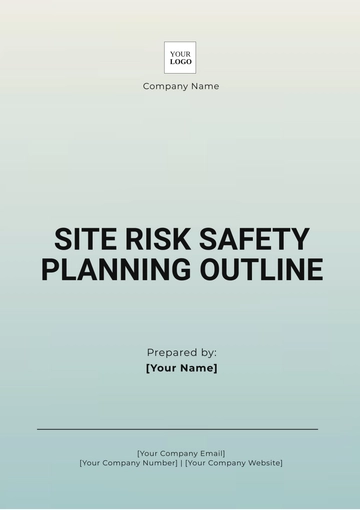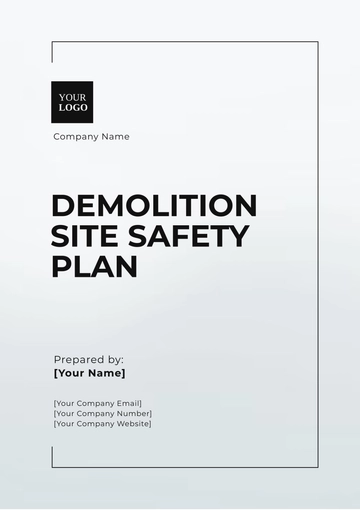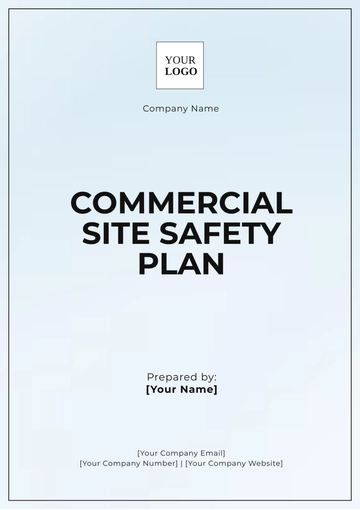Free Demolition Site Safety Plan
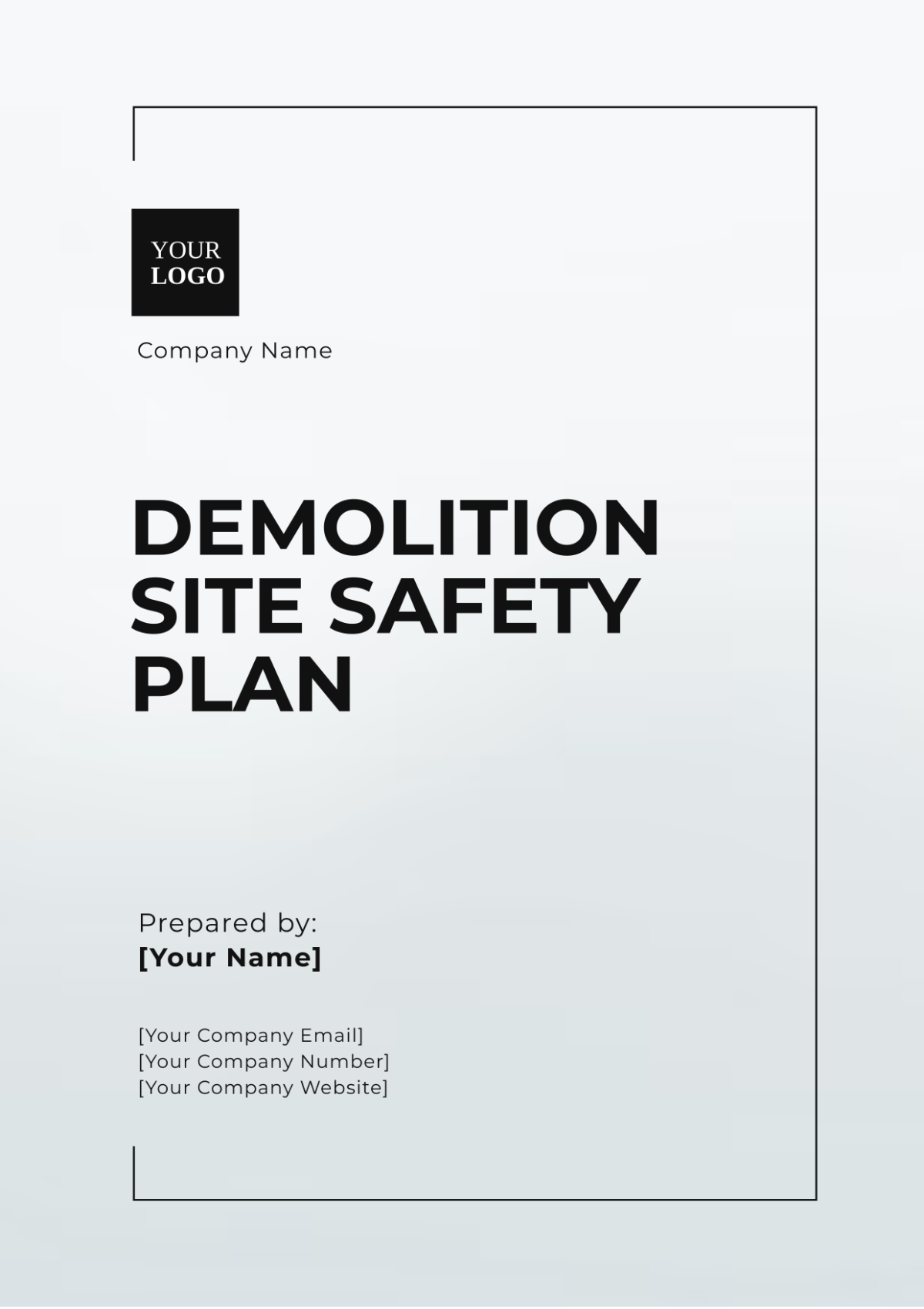
Prepared By: [Your Name]
Company: [Your Company Name]
1. Introduction
This Demolition Site Safety Plan outlines the safety procedures and practices to be followed at demolition sites to protect workers, the public, and the environment. The goal is to minimize risks associated with demolition activities while ensuring compliance with applicable regulations and best practices.
2. Objectives
Ensure the safety of all personnel involved in demolition activities.
Protect the public and surrounding environment from hazards associated with demolition.
Comply with local, state, and federal regulations related to demolition work.
Establish effective communication and training programs to promote safety awareness.
3. Site Assessment
3.1 Hazard Identification
Before demolition begins, a thorough assessment of the site should be conducted to identify potential hazards, including:
Structural instability
Asbestos and other hazardous materials
Utilities (water, gas, electricity)
Traffic and pedestrian access
Environmental considerations
3.2 Risk Assessment
After identifying hazards, perform a risk assessment to evaluate the potential impact and likelihood of incidents. This assessment should inform the safety measures to be implemented.
4. Safety Procedures
4.1 Personnel Training
All personnel involved in demolition activities must undergo safety training, including hazard recognition, emergency response, and the use of personal protective equipment (PPE).
Regular safety meetings should be held to discuss safety protocols and address any concerns.
4.2 Personal Protective Equipment (PPE)
Head Protection: Hard hats must be worn at all times on the site.
Eye Protection: Safety goggles or face shields must be used when necessary.
Hearing Protection: Earplugs or earmuffs should be worn in noisy areas.
Respiratory Protection: Masks or respirators may be required when working with hazardous materials.
Foot Protection: Steel-toed boots are mandatory.
4.3 Site Access Control
Establish a controlled access zone to restrict entry to authorized personnel only.
Mark the boundaries of the demolition site with appropriate signage and barriers.
Ensure adequate lighting and visibility at the site perimeter.
4.4 Utility Management
Before starting demolition, identify and disconnect all utilities to prevent accidents.
Contact utility companies to mark the location of underground services.
5. Emergency Procedures
5.1 Emergency Response Plan
Develop and communicate an emergency response plan that includes:
Procedures for reporting incidents and injuries.
Evacuation routes and assembly points.
Contact information for emergency services.
Designated personnel for emergency response coordination.
5.2 First Aid and Medical Assistance
Ensure that first aid kits are readily accessible on-site.
Designate trained first aid personnel to respond to injuries and emergencies.
Establish a plan for transporting injured personnel to medical facilities.
6. Environmental Considerations
Implement measures to control dust and debris, such as water spraying and barriers.
Properly manage and dispose of hazardous materials according to local regulations.
Monitor noise levels to minimize disturbance to the surrounding area.
7. Monitoring and Review
7.1 Safety Audits
Conduct regular safety audits to evaluate compliance with the safety plan and identify areas for improvement.
Use findings from audits to update training and safety procedures as necessary.
7.2 Incident Reporting
Establish a system for reporting and documenting all incidents, near misses, and unsafe conditions.
Review incident reports regularly to identify trends and implement corrective actions.
8. Conclusion
The implementation of this Demolition Site Safety Plan is essential to ensure the safety of workers, the public, and the environment during demolition activities. By adhering to the procedures outlined in this plan, all personnel will contribute to a safer and more efficient demolition process.
- 100% Customizable, free editor
- Access 1 Million+ Templates, photo’s & graphics
- Download or share as a template
- Click and replace photos, graphics, text, backgrounds
- Resize, crop, AI write & more
- Access advanced editor
Ensure a secure demolition process with the Demolition Site Safety Plan Template from Template.net. This editable and customizable template is specifically designed to address the unique safety challenges of demolition projects. Easily modify the content to meet your site’s safety protocols and regulatory requirements. With its structured layout and comprehensive guidelines, you can effectively communicate essential safety measures, protecting your crew and ensuring compliance throughout the demolition process.
You may also like
- Finance Plan
- Construction Plan
- Sales Plan
- Development Plan
- Career Plan
- Budget Plan
- HR Plan
- Education Plan
- Transition Plan
- Work Plan
- Training Plan
- Communication Plan
- Operation Plan
- Health And Safety Plan
- Strategy Plan
- Professional Development Plan
- Advertising Plan
- Risk Management Plan
- Restaurant Plan
- School Plan
- Nursing Home Patient Care Plan
- Nursing Care Plan
- Plan Event
- Startup Plan
- Social Media Plan
- Staffing Plan
- Annual Plan
- Content Plan
- Payment Plan
- Implementation Plan
- Hotel Plan
- Workout Plan
- Accounting Plan
- Campaign Plan
- Essay Plan
- 30 60 90 Day Plan
- Research Plan
- Recruitment Plan
- 90 Day Plan
- Quarterly Plan
- Emergency Plan
- 5 Year Plan
- Gym Plan
- Personal Plan
- IT and Software Plan
- Treatment Plan
- Real Estate Plan
- Law Firm Plan
- Healthcare Plan
- Improvement Plan
- Media Plan
- 5 Year Business Plan
- Learning Plan
- Marketing Campaign Plan
- Travel Agency Plan
- Cleaning Services Plan
- Interior Design Plan
- Performance Plan
- PR Plan
- Birth Plan
- Life Plan
- SEO Plan
- Disaster Recovery Plan
- Continuity Plan
- Launch Plan
- Legal Plan
- Behavior Plan
- Performance Improvement Plan
- Salon Plan
- Security Plan
- Security Management Plan
- Employee Development Plan
- Quality Plan
- Service Improvement Plan
- Growth Plan
- Incident Response Plan
- Basketball Plan
- Emergency Action Plan
- Product Launch Plan
- Spa Plan
- Employee Training Plan
- Data Analysis Plan
- Employee Action Plan
- Territory Plan
- Audit Plan
- Classroom Plan
- Activity Plan
- Parenting Plan
- Care Plan
- Project Execution Plan
- Exercise Plan
- Internship Plan
- Software Development Plan
- Continuous Improvement Plan
- Leave Plan
- 90 Day Sales Plan
- Advertising Agency Plan
- Employee Transition Plan
- Smart Action Plan
- Workplace Safety Plan
- Behavior Change Plan
- Contingency Plan
- Continuity of Operations Plan
- Health Plan
- Quality Control Plan
- Self Plan
- Sports Development Plan
- Change Management Plan
- Ecommerce Plan
- Personal Financial Plan
- Process Improvement Plan
- 30-60-90 Day Sales Plan
- Crisis Management Plan
- Engagement Plan
- Execution Plan
- Pandemic Plan
- Quality Assurance Plan
- Service Continuity Plan
- Agile Project Plan
- Fundraising Plan
- Job Transition Plan
- Asset Maintenance Plan
- Maintenance Plan
- Software Test Plan
- Staff Training and Development Plan
- 3 Year Plan
- Brand Activation Plan
- Release Plan
- Resource Plan
- Risk Mitigation Plan
- Teacher Plan
- 30 60 90 Day Plan for New Manager
- Food Safety Plan
- Food Truck Plan
- Hiring Plan
- Quality Management Plan
- Wellness Plan
- Behavior Intervention Plan
- Bonus Plan
- Investment Plan
- Maternity Leave Plan
- Pandemic Response Plan
- Succession Planning
- Coaching Plan
- Configuration Management Plan
- Remote Work Plan
- Self Care Plan
- Teaching Plan
- 100-Day Plan
- HACCP Plan
- Student Plan
- Sustainability Plan
- 30 60 90 Day Plan for Interview
- Access Plan
- Site Specific Safety Plan
